Asexual Propagation of Plants: A Comprehensive Guide for Successful Plant Reproduction
Plants can be propagated sexually and asexually. Sexual propagation includes propagation by seeds, while asexual propagation is based on the vegetative parts of plants for raising new ones. Vegetative parts of plants like shoots, leaves, buds, roots, stems, and underground parts are used in different ways for reproducing new plants.
Asexual propagation is the best way to get new plants similar to their mother plant. The most common asexual propagation methods include cutting, layering, grafting, and budding. These propagation methods need specialized skills and are done differently in different plants.
What Is Asexual Propagation?
Asexual propagation is the process of generating a new plant by taking a piece of one parent plant. The new plant that develops is genetically identical to its parent. Asexual propagation uses a plant’s vegetative organs, such as stems, roots, or leaves.
Asexual reproduction offers several advantages. It may be easier and faster in some species, it may be the only method to keep some cultivars alive and it avoids certain species’ juvenile traits. Cuttings, layering, division, budding, and grafting are the most common asexual propagation methods.
Cuttings are formed by rooting a severed piece of the parent plant. Layering is done by rooting a portion of the parent and then detaching it. Budding and grafting are formed by uniting two plant parts from different types.
Asexual Propagation Methods
Cutting is a piece of a plant that under suitable conditions will initiate root growth. Rooting based base on the maturity stage of the wood. It does not involve specialized skills. It is inexpensive, easy, can make clone plants, and quick method of propagation. Types of cutting include leaf cutting, stem cutting, and root cutting. Stem cutting can be done in several ways like hard wood cutting, semi hard wood cutting, soft cutting, and herbaceous cutting.
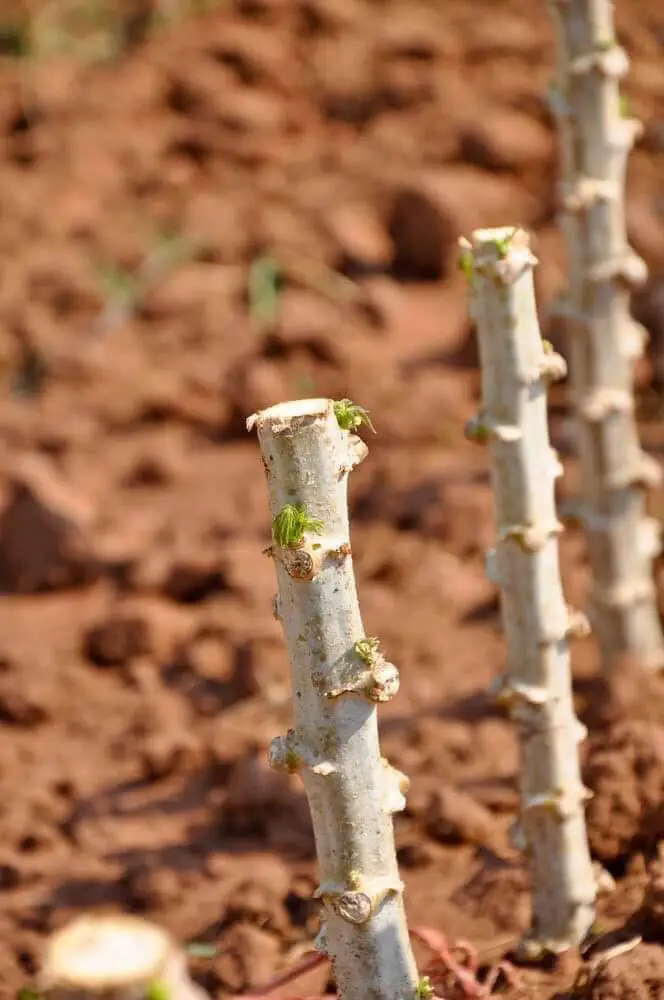
In hardwood cutting length of the stem should be 6-9 inches. It is made of matured, dormant wood after leaves have abscised and pencil thickness in size. A basal cut should make just below the node and it should be a slant cut.
Slant cut increases the surface area, catalyzes root initiation, and increases the area which applies hormone. The top cut is around 2.5 cm above the node. This hard woodcutting can be practiced for Bougainvillea, Polyscias, and Pomegranate.
Partially matured wood is used for semi-hardwood cutting. This type of cutting is collected later in the growing season when the lower portion of the cutting has become lignified. The length of the stem should be 7.5-15 cm.
If leaves are too large trim them to reduce the leaf area. Auxin treatment in this semi-hardwood cutting will increase quick rooting. Camelia, Ixora, Gol dust dracaena, Hibiscus, and Croton are commonly propagated by this type of cutting.
For softwood cutting, cuttings are taken from soft and quick. Soft and tender shoots are not desirable, as they often will deteriorate before rooting. Harvest cutting at a cool early morning to prevent wetting. The length of the cutting should be in the 7.5 cm succulent part of the plant before tissues have lignified (become woody). It generates roots easier -12.5 cm. This cutting is suitable for Jasmine, Durantha, Dracaena sadriana, and Cordyline.
Leaf-cutting can be practiced for a limited number of species. Use a leaf blade with part of the petiole or the leaf blade alone. Roots and new shoots will start at points where the veins were cut or at the base of the leaf. This cutting is suitable for Peperomia, Begonia, and Sansevieria. Root cuttings are used to propagate Guava, Breadfruit, Apple, Bayberry, some Rose species, Oak-leaf hydrangea, Yucca, and Raspberry.
Plants produced from root cuttings may have characteristics different from the parent plant therefore it use infrequently in the nursery industry and also labor required is also high in this technique. These cuttings should be 1-2 cm thick and 20- 25 cm long. One meter length root cuttings should be taken away from the tree trunk and placed these cuttings horizontally into the soil about 10 cm deep until they shoot.
Grafting is the art of connecting two pieces of living plant tissue together that will unite and subsequently grow and develop as one composite plant. Rootstock is the lower portion of the graft, which develops in the root system of the grafted plant.
It may be a seedling, a rooted cutting, or a layered or micro-propagated plant. A scion is a short piece of detached shoot containing several dormant buds. When it is united the rootstock comprises the upper portion of the graft and from which will grow the stem or branches of the grafted plants.
Grafting techniques include cleft grafting, whip grafting, whip, and togue grafting, and wedge grafting. In all these grafting methods, the technique is the same but the only difference is the shape of the cutting.
In cleft grafting scion has the same diameter as the rootstock. The scion should contain 4-5 laterals with a terminal bud. Leaves should be removed 2/3 weeks before activating the bud. The basal end of the cut is “V” shaped and it should be matched with the cut into stock. Graft unions are wrapped with polythene tape and provide a propagator to minimize water loss. In budding also different budding methods can be practiced.
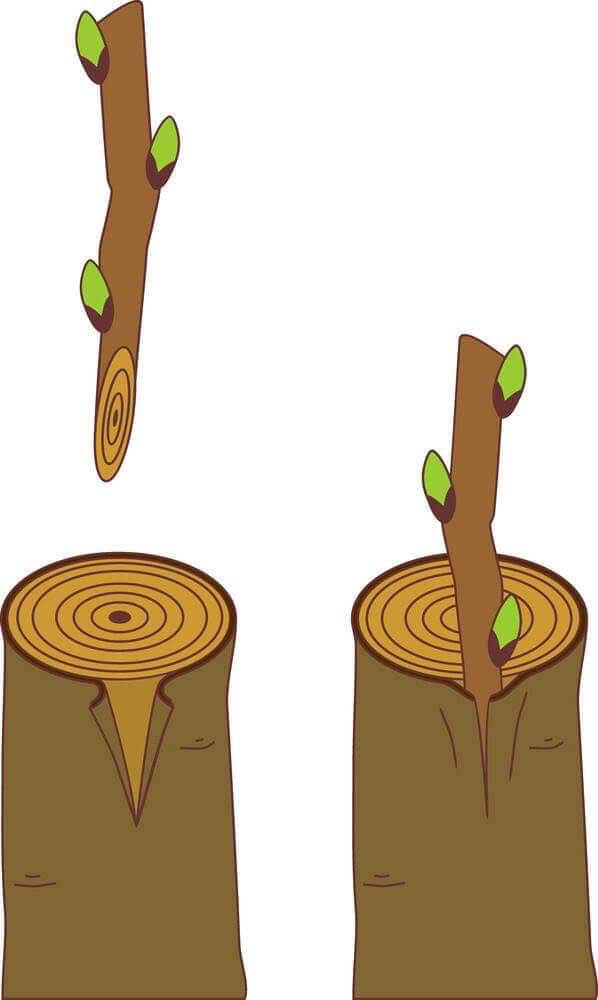
The technique of budding is the same difference in the shape of cutting. In patch budding rectangular patch of bark is removed from the rootstock about 4 inches above the soil surface. After the bud patch is removed from the bus stick, it must be inserted immediately on the rootstock and wrapped.
It should same size patch of bark that contains a bud of the cultivar to be propagated. It’s advised not to touch the cut surface of the patch of bark to hold it from the bud. The bud must not be covered during wrapping. Budding is suitable for Avocado, Rambutan, and Hibiscus. Other than patch budding and chip budding, T budding and inverted T budding can be practiced.
In T-budding the “T” cut on the stock is done about 20-25 cm above the surface with a 2 cm long vertical cut and a 7-8 mm long horizontal cut on the stock. A slight twist with the budding knife may open the two flaps of bark and then the bud should be inserted under the two flaps of bark by pushing downward If part of the bud remains above the horizontal cut, it must be cut off.
This will allow the flaps to close tightly. As the last step, the incision should be closed with budding tape that should be wrapped tightly around the stem.
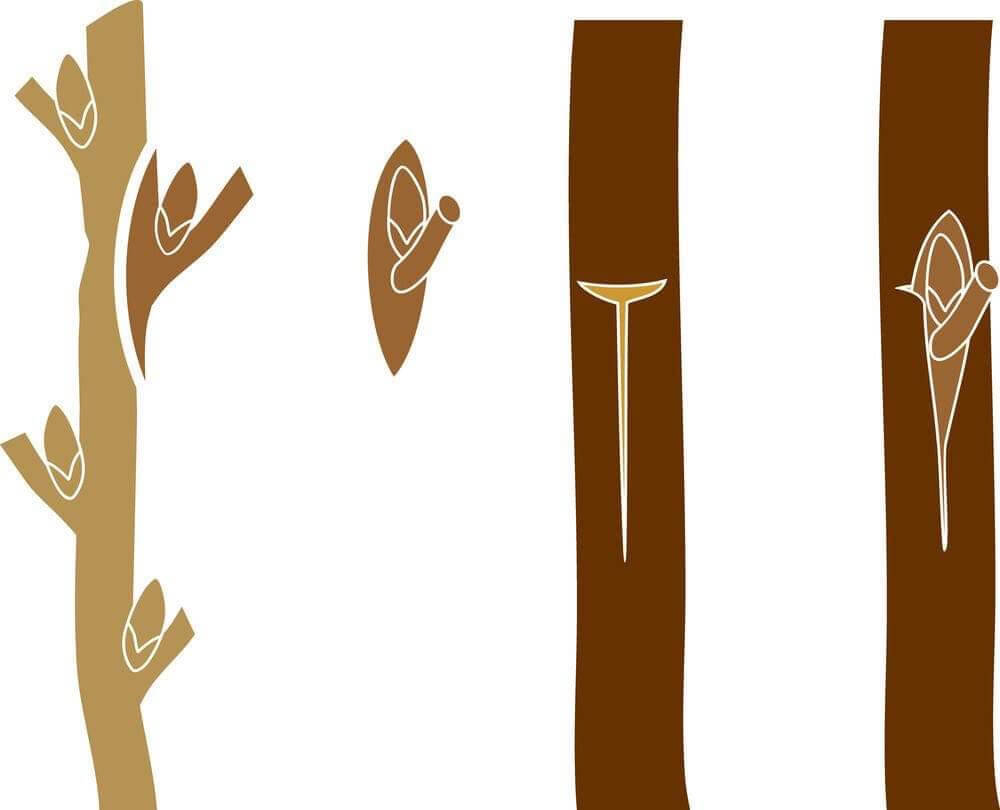
Tying must start at the top end of the incision or the bottom. The tape should be removed after 3-4 weeks. By this time, the shield of the bud and the petiole may indicate the condition of the bud. If the petiole does not fall off at the touch and the shield is shriveled, the bud is possibly dead and therefore the budding process should be repeated. Peaches, Cherries, and Plums are propagated by the T budding method.

The inverted T-budding technique is exactly the same as the normal T-budding technique. The exception to this method from T budding is that the horizontal cut is made on the bottom end of the incision. In this budding technique, the bud is cut from the bud stick by starting above the bud and exiting below it.
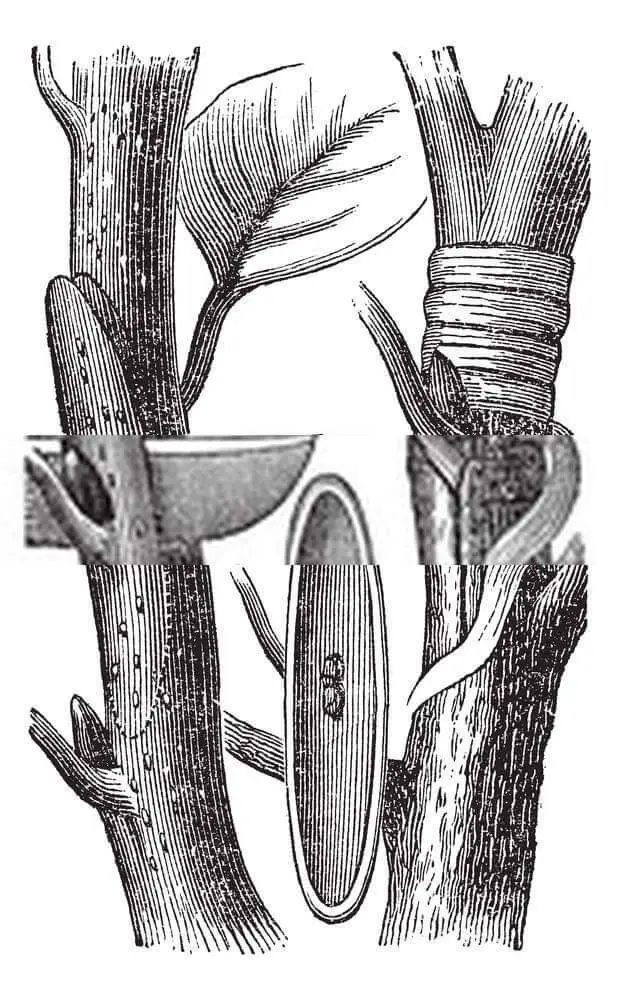
Chip budding method of budding can be used whether or not the bark is slipping. An advantage is that chip-budding is it can be done when the bark is not slipping. Firstly make a cut about 2-2.5 cm long with a depth of 1/4 to 1/5 the diameter of the stock. The second step is to make a small back cut at the bottom of the cut to remove the chip.
Then bud can also be cut off if necessary. Ideally the bud stick and stock must be the same diameter. The stock and scion must be placed together which allows the cambia of the bud and stock to match together as much as possible. Desiccation is a high risk in this method; therefore, the wound should be wrapped tightly with grafting tape/ polyethylene tape is best since it does a much better job of sealing the bud.
In budding and grafting stock and scion must be complete. These cambial regions of stock and scion must be in intimate contact after the graft components. The grafting operations must be done when the stock and scion are in a proper physiological stage. After the grafting operation, all the cut surfaces must be carefully protected from desiccation.
The development of roots on a stem while the stem is still attached to the parent plant is called layering and is a relatively easy method of propagation. In this method, the new plant receives nutrients and water from the parent plant until roots develop and roots are allowed to develop on the covered portion of the stem while still being attached to the mother plant. Layering can be done during any season of the year.
During the spring and summer season’s layers are usually rooted and ready for transplanting in the fall or winter. The rooted stem following detachment from the parent plant is known as a layer.
Branches from pencil size to about 3 ⁄4 inch in diameter are best for layering. While there are other methods, air, and tip layering are the most popular for this form of propagation. Types of layering include natural, simple, compound, mound, trench, and air layering.
In simple layering bend a low-growing flexible stem to the ground. Wound the lower side of the bench branch. The stem is gently covered and positioned exactly. Cover the part of the branch with soil, leaving 6-12 inches above the soil. Simple layering is suitable for Jasmin and Philodendron.
In air layering two parallel cuts about an inch apart around the stem and through the bark and cambium layer. Connect the two parallel cuts with a long cut. Then remove the ring of bark, leaving the inner woody tissue exposed. Scrape the newly bared ring to remove the cambium tissue to prevent a bridge of callus tissue from forming.
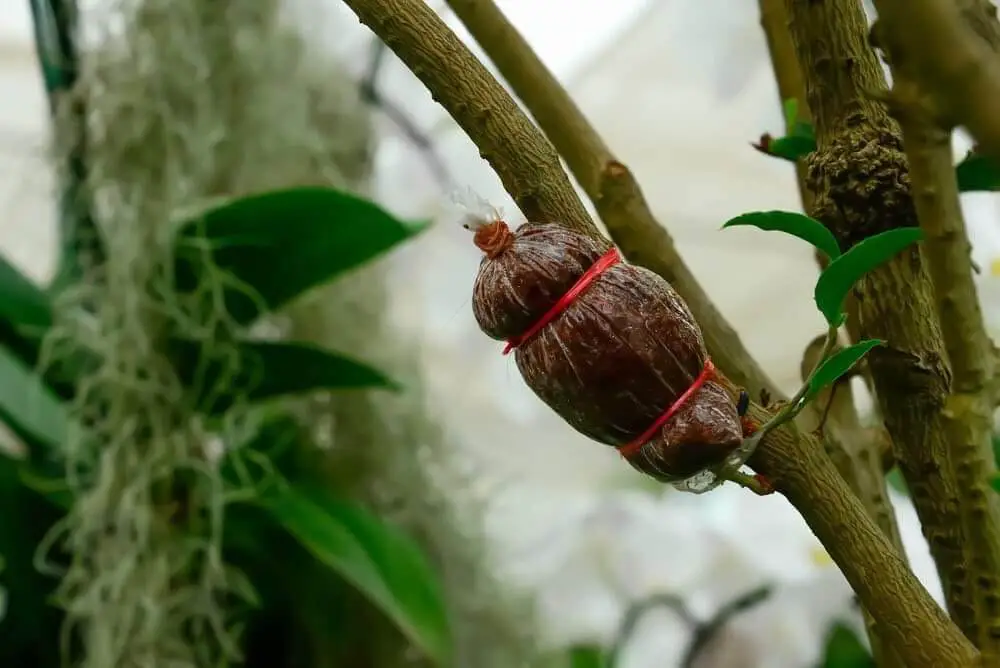
The open area should be treated with a rooting hormone. Wrap with polythene covered by surrounding the around with moist Coir dust. It’s important to place rooting material in the bag before it is sealed. This process must be completed when the air humidity is highest, during rainy conditions. Air layering is done for Guava, Macadamia, Mango, and Litchi.
- 29 Bucket Gardening Ideas for a Lush, Compact Garden - October 30, 2024
- 20+ Chic Boho Bedroom Ideas for a Cozy and Stylish Retreat - June 20, 2024
- 12+ Modern Boho Living Room Ideas to Create a Unique Oasis - June 10, 2024

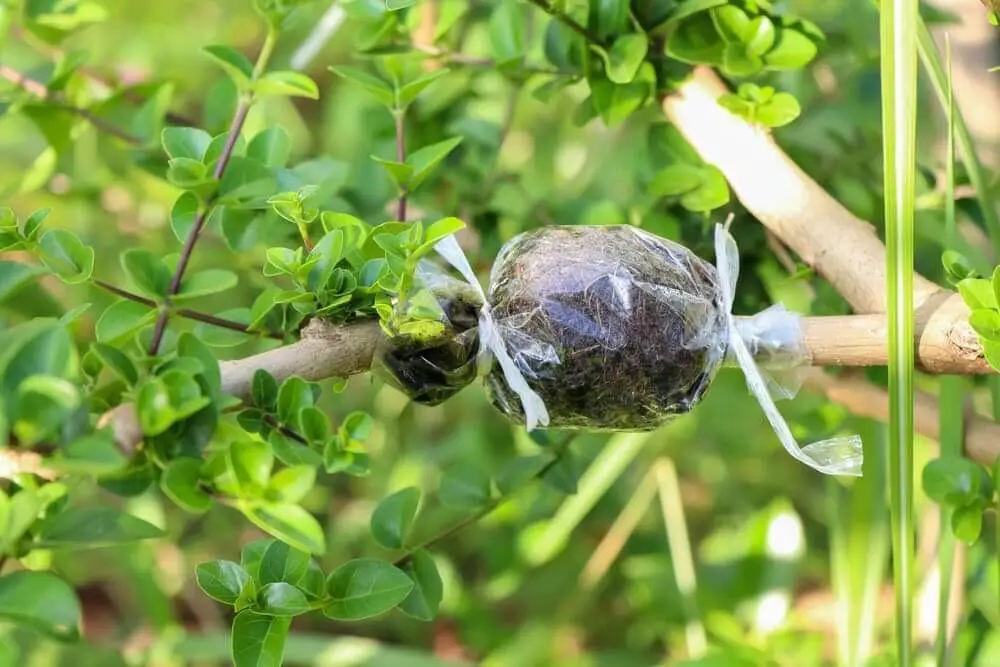
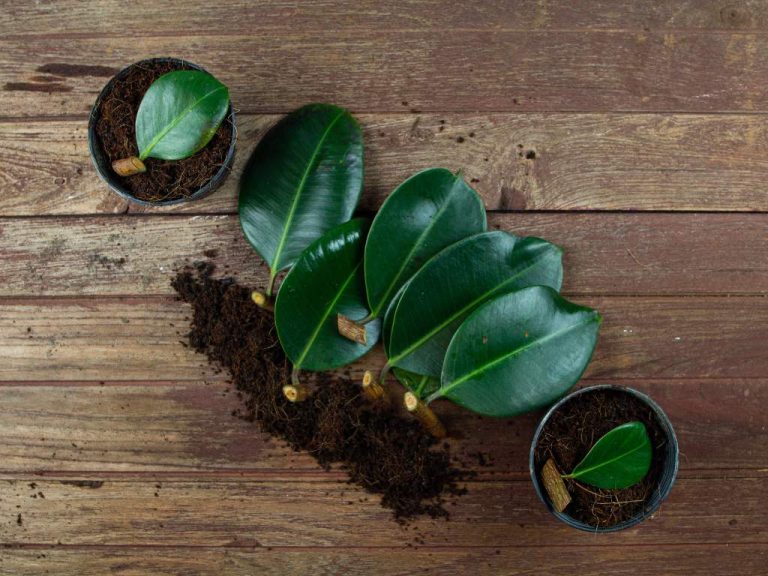

knowledge very nice